
The Netgear Nighthawk X4S D7800 looks just about identical to its slightly more powerful and similarly named cousin, the R7800, and the older R7500 before it. It’s a black trapezoid with four antennas in a porcupine-like arrangement, with the same pair of USB ports and eSATA port. It adds a few new features though, bringing MU-MIMO wireless, an integrated VDSL modem and 256-QAM over both 802.11n and 802.11ac.
Under the radar of much of the technology world, a marketing war is taking place between router manufacturers. Official wireless standards are becoming left behind, as multiple firms are launching products with chipsets that support faster speeds, using proprietary encoding to push more bits into a wireless signal, and give faster headline speeds.
The Quadratic Amplitude Modulation (QAM) of a wireless signal describes how many potential bit values can be represented by a single pulse, or symbol, emitted from a router. Higher values mean more bits, and more bits means higher transfer rates. The official IEEE 802.11 wireless specifications standardise this value, but in order to get one up on the competition, router manufacturers (more accurately, the chipset providers such as Broadcom) are supporting faster QAM values, to drive even better performance.
The R7500 already supported 256-QAM over 802.11ac, delivering 1733 Mbps over four antennas. Now, with the D7800, 2.4GHz 802.11n supports 256-QAM as well.
The headline quoted speed of the R7500 was 2.33 Gbps, derived from 600Mbps over 802.11n plus 1733 Mbps over 802.11ac. That value is now 2.53 Gbps with the D7800, thanks to a small 200 Mbps increase from using 256-QAM for 802.11n, boosting its total throughput to 800 Mbps. Netgear is calling it AC2600 by rounding up.
Given that most router firms are now using chipsets that support higher QAM values, expect to hear more about this sort of thing in the future, including in other router reviews here on Kitguru. But unless both the router and client device support this higher QAM value, you won’t see the benefit of the faster speeds. The only way to be certain to attain them is by using two routers, one of which is in bridge mode, which is how we have tested the 4×4 802.11ac mode on the Netgear Nighthawk X4S D7800.
But with the built-in wireless adapter on a standard PC or Mac laptop, you won’t see that performance. The overwhelming majority of on-board 802.11ac wireless adapters use a pathetic 2×2 configuration, which admittedly is fine for most casual users for Facebook Messenger, but it means worse performance than whatever a router like the Nighthawk X4S D7800 is capable of. Apple’s modern MacBook Pro laptops use a 3×3 configuration, which is still nowhere near what a modern top-end router can manage.
That means you won’t get those speeds on the D7800 or any other 4×4 router without spending significant sums by buying a second router and using it in bridge mode. Otherwise you’ll be limited to 3×3 or 2×2 802.11ac.
Aside from this change to the wireless configuration, the D7800 has a built-in ADSL/VDSL modem. It supports MU-MIMO for up to three devices and the internal memory has been doubled from 256MB to 512MB. Although the R7800 has been equipped with a 1.7GHz dual-core processor, the D7800 remains at the same 1.4GHz of the R7500.
It’s a good feature set, and Netgear routers have performed well in previous testing. Can the Nighthawk X4S D7800 maintain these high standards? Let’s find out.
Price: £245
Specification:
Wireless protocols: MU-MIMO Quad-stream 802.11ac, dual-band 2.4GHz / 5Ghz 802.11n (800Mb/sec), 802.11a/g, 802.11b
Antenna Configuration: 4×4 External Antennas
Wired protocols: Gigabit Ethernet
Included Modem: VDSL/ADSL 2+
On the packaging, you get a gist for the main features here we just talked about – quad-steam WiFi, MU-MIMO, 2600Mbit/sec total throughput and a built-in VDSL modem.
In the package you get the four antennas, labelled with the position you are supposed to connect them to the router. It’s not obvious that they are different in any way, but apparently Netgear suggests specific antennas should be placed in specific positions on the router.
A small piece of plastic covering the top of the device (we removed this for photography) indicates where the antennas should go. There’s also an RJ-11 cable, a short piece of Ethernet cable, some manuals (not pictured) a DSL filter and a UK power adapter.

Here’s a look at the DSL filter close up. It’s a fairly simple thing, which lets you use your phone and modem at the same time.

If you’re old enough to remember the 1980s, you’ll remember Nightrider. That’s one possible resemblance for the appearance of Netgear’s black, angled routers. Maybe it could be a stealth bomber.
Whatever you think, it is a design that has now been used on multiple routers from the company, creating something of a trademark look to them.

And here’s another shot from the front.
Netgear’s routers have more lights and LEDs on them than any other brand, and there are 11 on the front of the D7800, for the status of various aspects of the router. They light up white when in use or active, while the left-most power light is yellow when the device is powering up.
Taking a look at the back you can see the full set of external connectors. There are four gigabit Ethernet ports, plus one additional port for connection to either cable or external DSL modems. Of course, if you have BT Infinity, TalkTalk or any other non-Virgin internet provider in the UK, you can ditch the external modem, and connect directly to the VDSL port at the bottom.
There’s also a manual power switch, a handy reset button (accessible with a small object like a pin) which resets the D7800 to factory settings when pressed for about 10 seconds.
Remember the 11 lights at the front? If your disco days are a thing of the past, they can be turned off via a small switch at the back.

There are two USB 3 ports included, a generous offering, when most router manufacturers cheap out and save a few pennies by resorting to USB 2 for one or both ports.
And also uniquely, an eSATA port as well.
Netgear's router software is branded Genie, and utilises a fairly simple white and black appearance.

On the home page is the typical system of widgets, showing at-a-glance status of your network, with wireless settings, attached devices and internet status.
The Advanced page gives more detailed router information.
The most useful thing about the setup wizard is for choosing presets for the DSL connection, based on your country and ISP. You can do this manually on the internet page, or in the setup menu under Advanced.
The ReadyShare page offers some decent options for sharing USB media, with a number of protocols supported, including FTP and HTTP shares along with standard PC or Mac file sharing.
You can switch between router and access point mode.
One of our bugbears during testing was the difficulty in setting up a wireless bridge (as explained later). You have to manually enter the name of the SSID you want to connect to, without drop-down boxes to select from. It's not very polished.
There's also a VPN option.
Generally, there are plenty of features here. We haven't showed some features, such the usual QOS, Parental Controls and so on.
We tested the Netgear Nighthawk X4s D7800 over 802.11n, 3×3 802.11ac and quad-stream 4×4 802.11ac, using a second router configured as a bridge.
As with other networking reviews, Macs were used for testing with the useful software WiFi Perf, based on the open-source iPerf software. We tested both client-to-server (c2s) and server-to-client (s2c) speeds for three minutes, at distance of 1 metre, 5 metres and 10 metres, with the devices in direct line of sight to the router.
For the 4×4 tests, one Mac was connected via Ethernet to the router with another connected via Ethernet to the second router, configured as a bridge.
We also updated the Netgear Nighthawk X4S D7800 to the latest firmware prior to testing.
802.11n Results
Some excellent results over 802.11n at short range, hitting over 160 Mbit/sec, and while speeds drop off a bit at long range, as expected, it's still very much usable. Which is particularly helpful for people with older smartphones or tablets.
3×3 802.11ac Results

With the 3×3 802.11ac tests, we see some really good average speeds. As a general rule, anything over 600 Mbit/sec is good for 802.11ac, and averages over 700 are superb, so at short range, the Netgear Nighthawk X4S D7800 delivers the goods.
4×4 802.11ac Results

Just looking at the short-range results, you might not think these gains are impressive. In 4×4 mode the D7800 is only faster by a small margin, on average. Admittedly, we found that while it even hit a blistering high of 900 Mbit/sec close to the start, a result we rarely see from any wireless kit, it drops off sharply and averages out at a less impressive 780 Mbit/sec. This isn't particularly higher than the 3×3 results we recorded, making you wonder what the point would be of using 4×4.
The answer is in the long rage results, which are significantly improved over the 3×3 performance above. It leaps from 323 Mbit/sec to 577 Mbit/sec read, and from 402 Mbit/sec to 595 Mbit/sec. That's a great achievement.
USB Performance
We've seen better results from USB ports on modern routers. There's no reason 100MB/sec is not possible, maximising the speed of gigabit Ethernet, but these results are somewhat middling.
There's a lot to like about the Netgear Nighthawk X4S D7800. First off, the physical appearance of Netgear's now-standard router design is a balance of good looks and unique design without being garish.
The 3×3 performance puts it close to the top of the pile of 802.11ac routers, trading blows with Asus wireless routers for the top spot. In standard 3×3 802.11ac mode, tested with an off-the-shelf laptop with an internal adapter, it delivered some outstanding speeds in excess of 700 Mbit/sec. Great results, and the 160 Mbit/sec over ancient 802.11n at short range is excellent too.
Based on these results alone, the Netgear Nighthawk X4S D7800 is worth investing in, if you use a laptop with a 3×3 internal adapter, since the speeds are indeed better than a lot of cheaper routers.
What about the headline 4×4 802.11ac mode? For that, as we've pointed out, you'll need to invest in a second router to use in bridge mode as a client, doubling the overall cost. Looking at the short range results alone, it's not immediately clear that the investment is worth it. The average speeds increase by a relatively small margin, although we did record better burst results during the tests.
But at longer range, there's a much clearer difference. Two Netgear D7800 routers operating at 4×4 speeds achieve 577 Mbit/sec read and 595 Mbit/sec write, compared with just 323 Mbit/sec read and 402 Mbit/sec write with a laptop and a single D7800 in 3×3 mode.
That's a massive gain, and makes it worth the investment, to some people at least, particularly since the whole point of using two routers together is over longer distance, extending the range of a high-speed wireless network. If that's what you need, these results go a long way to justifying the additional cost and effort needed to set up a 4×4 network.
However, outside of the performance results there were also a few things we definitely did not like. While a preference for the look of a software interface is arguably a subjective matter, there are instances where it lacks functionality.
For example, when setting up bridge mode, there was nowhere in the interface to simply choose an available wireless network from a list, like you might expect on modern routers. Instead, Netgear expects you to type the SSID name, click apply, then hope when the router has finally rebooted, it's all working. During testing, this took three attempts to get right. And it's just one example of where a bit more polish to the software could have made a big difference.

This is all worth mentioning because we've been so spoiled by the efforts of other firms. For example, the software of aforementioned Asus routers is simply miles ahead of Netgear's, not to mention Linksys, AVM and others.
But despite what is perhaps poor presentation, there are still plenty of settings to fiddle with, so the D7800 isn't really lacking in any features.
The USB performance is slightly disappointing. Perhaps the faster processor in the sibling R7800 model might improve transfer rates, but the speeds we recorded weren't impressive here.
You might feel you can live with these issues, of the software being a bit clunky at times, or you might not use the USB port. Crucially, behind it all is some very fast wireless performance, which is the reason most people choose a high-end router, and it's here where Netgear has delivered.
Discuss on our Facebook page, over HERE.
Pros:
- Excellent 3×3 802.11ac wireless performance.
- Good network performance over all wireless channels at short and medium range.
- Full of useful hardware features.
Cons:
- Uninspiring software interface.
- USB performance misses the mark.
Kitguru Says: The Netgear Nighthawk X4S D7800 is far from perfect. The software pales in comparison to some competitors' efforts, and the USB performance could be better. But in its favour, we got some really good results over both standard 3×3 and quad-stream 4×4 802.11ac, particularly at long range.
 KitGuru KitGuru.net – Tech News | Hardware News | Hardware Reviews | IOS | Mobile | Gaming | Graphics Cards
KitGuru KitGuru.net – Tech News | Hardware News | Hardware Reviews | IOS | Mobile | Gaming | Graphics Cards







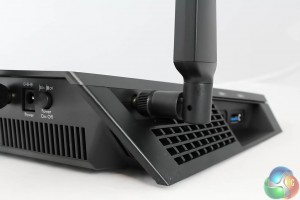

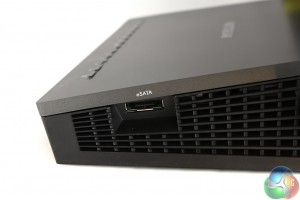

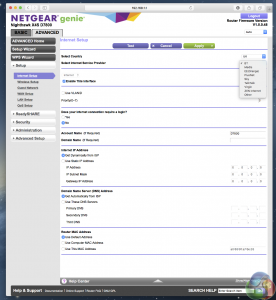





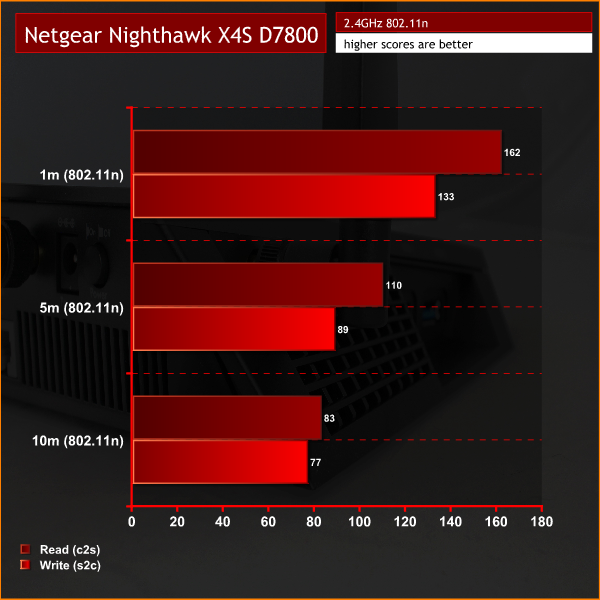
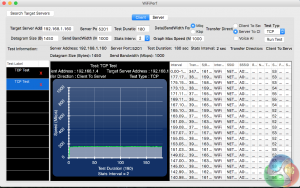






So when is this unit coming to the United States?